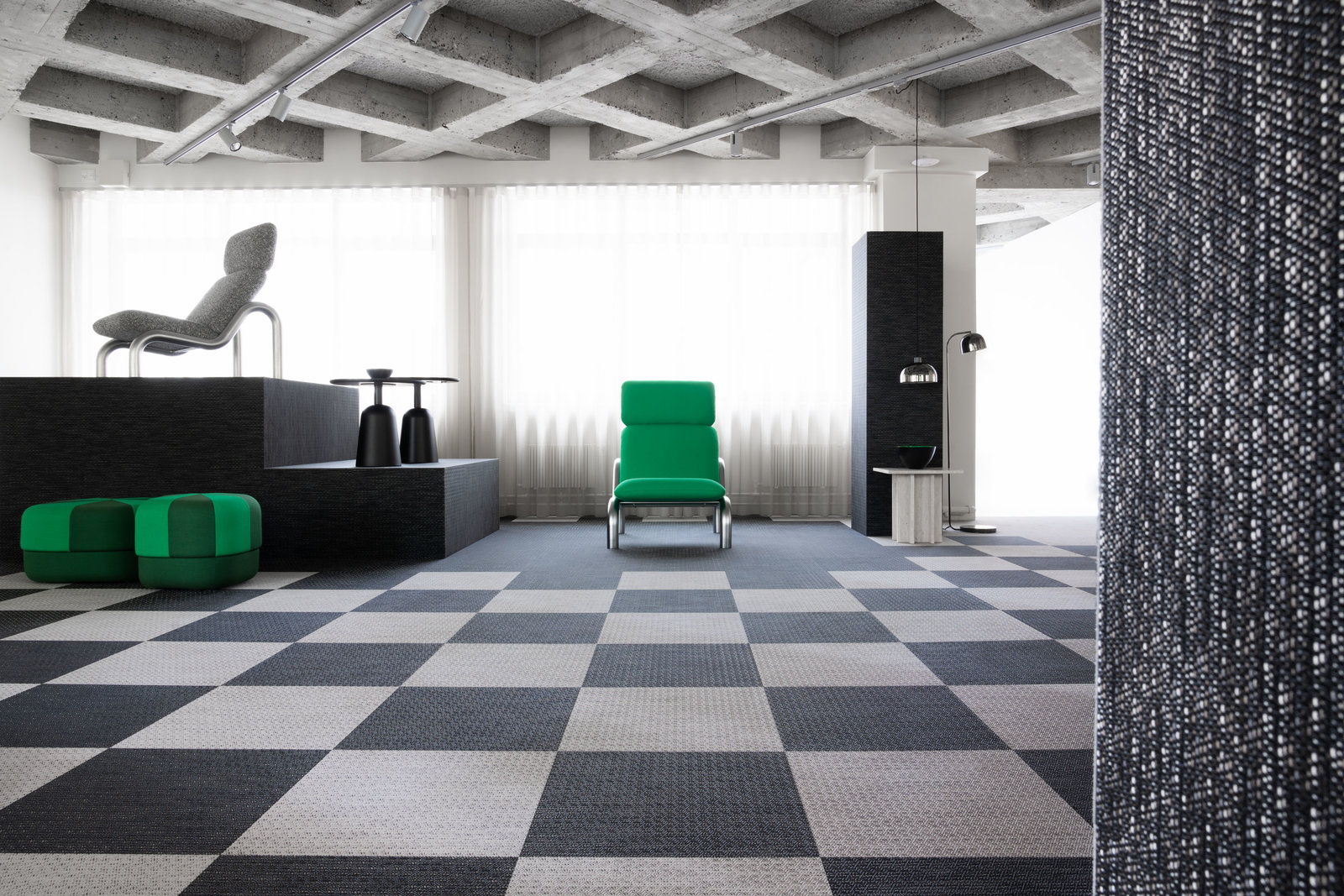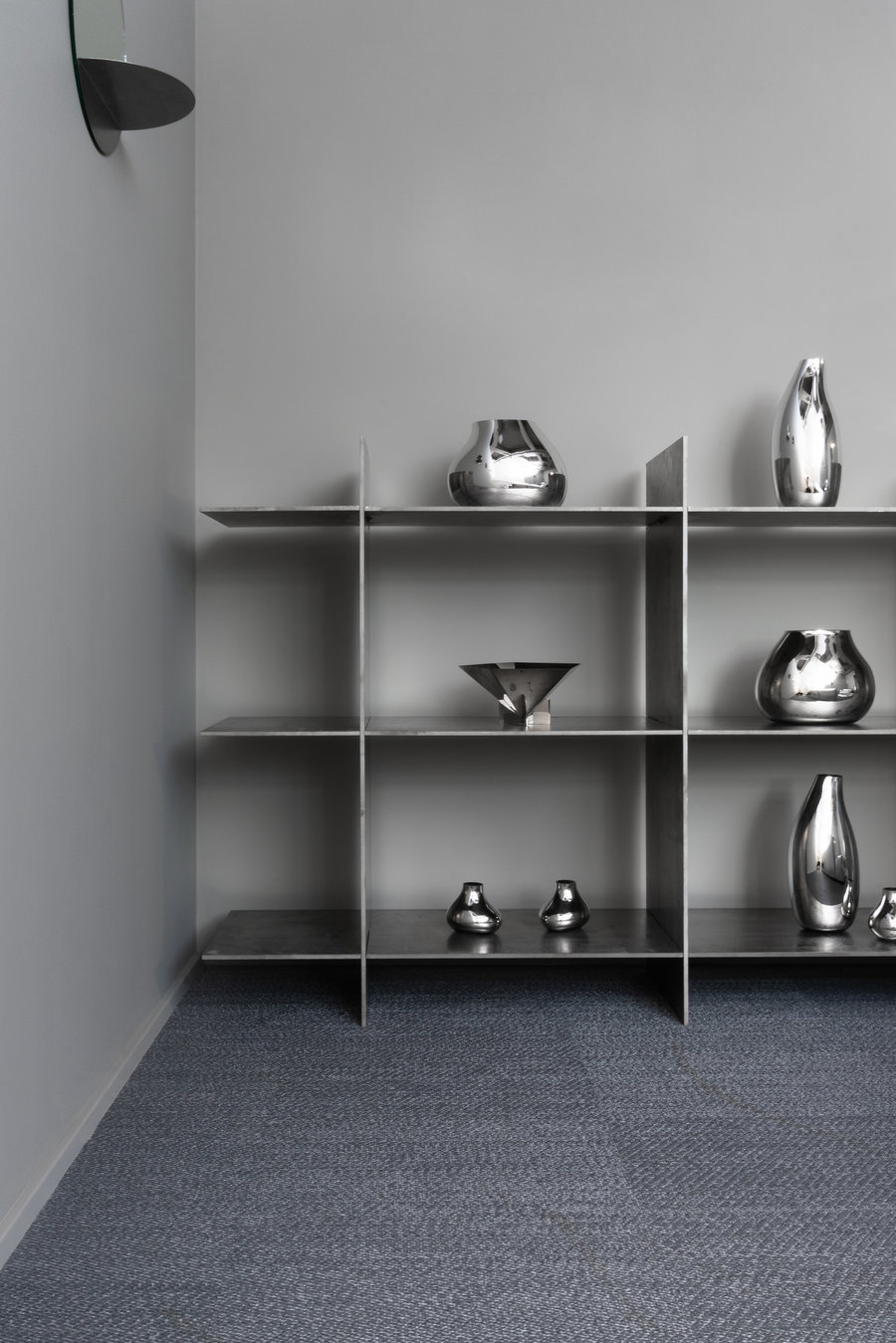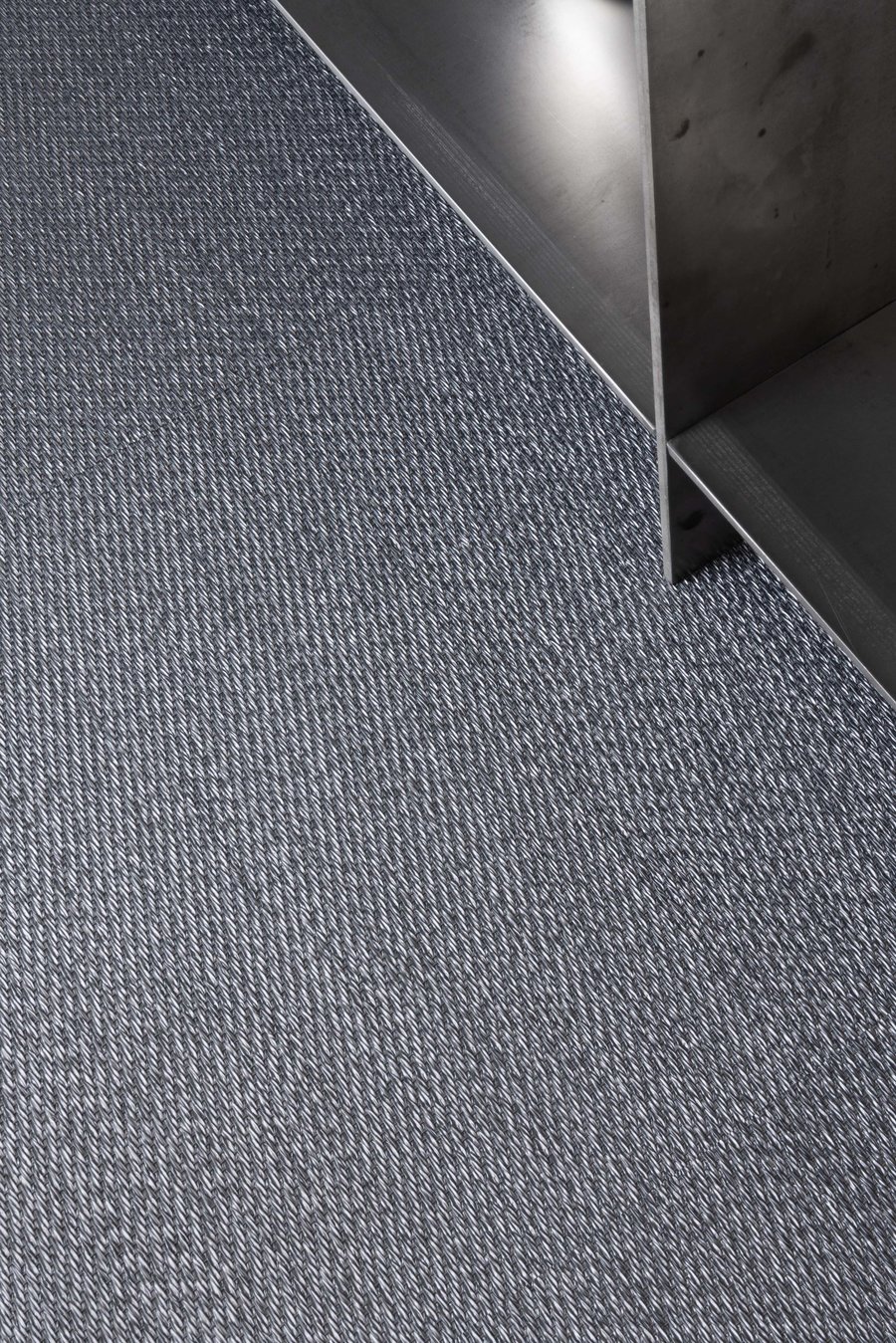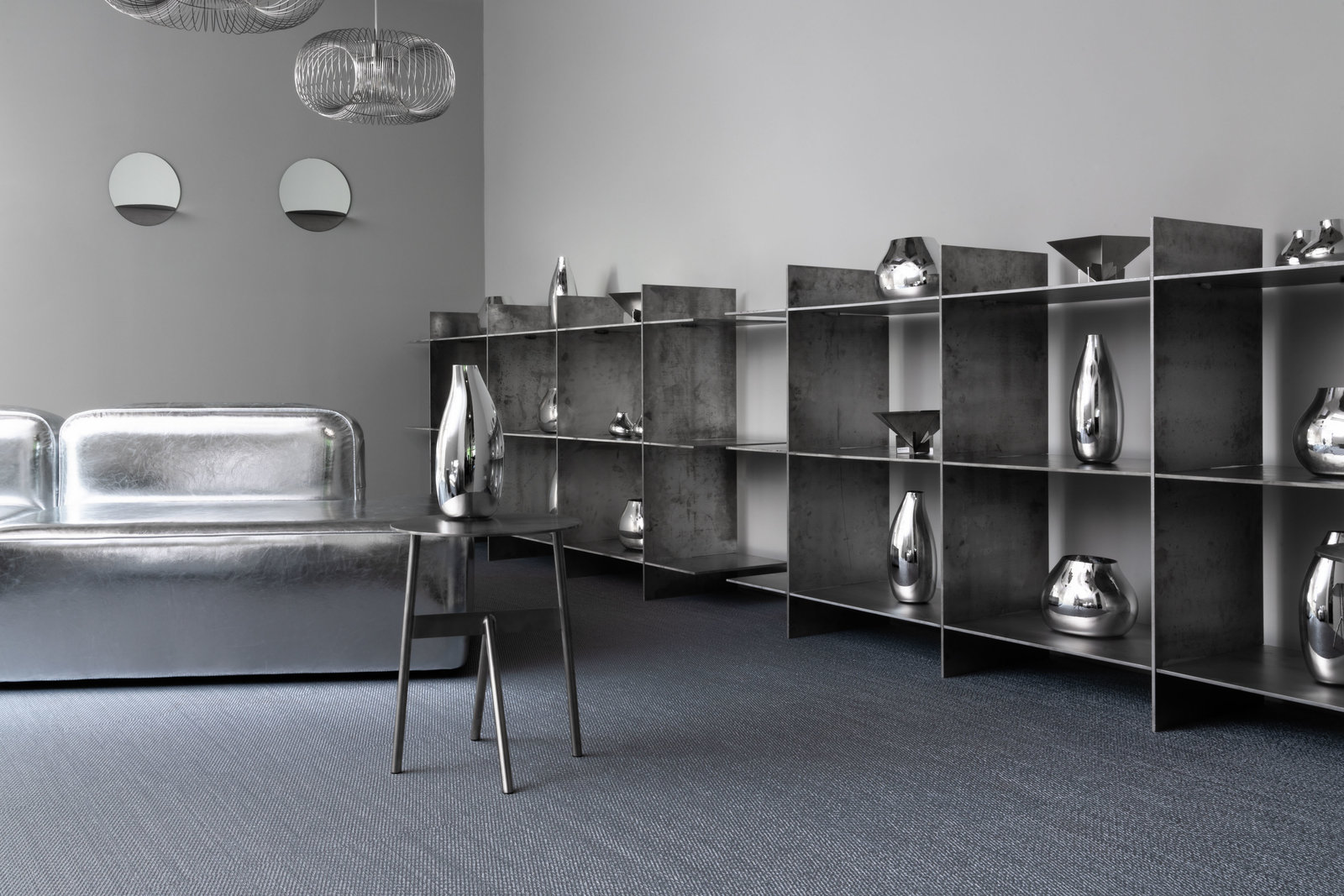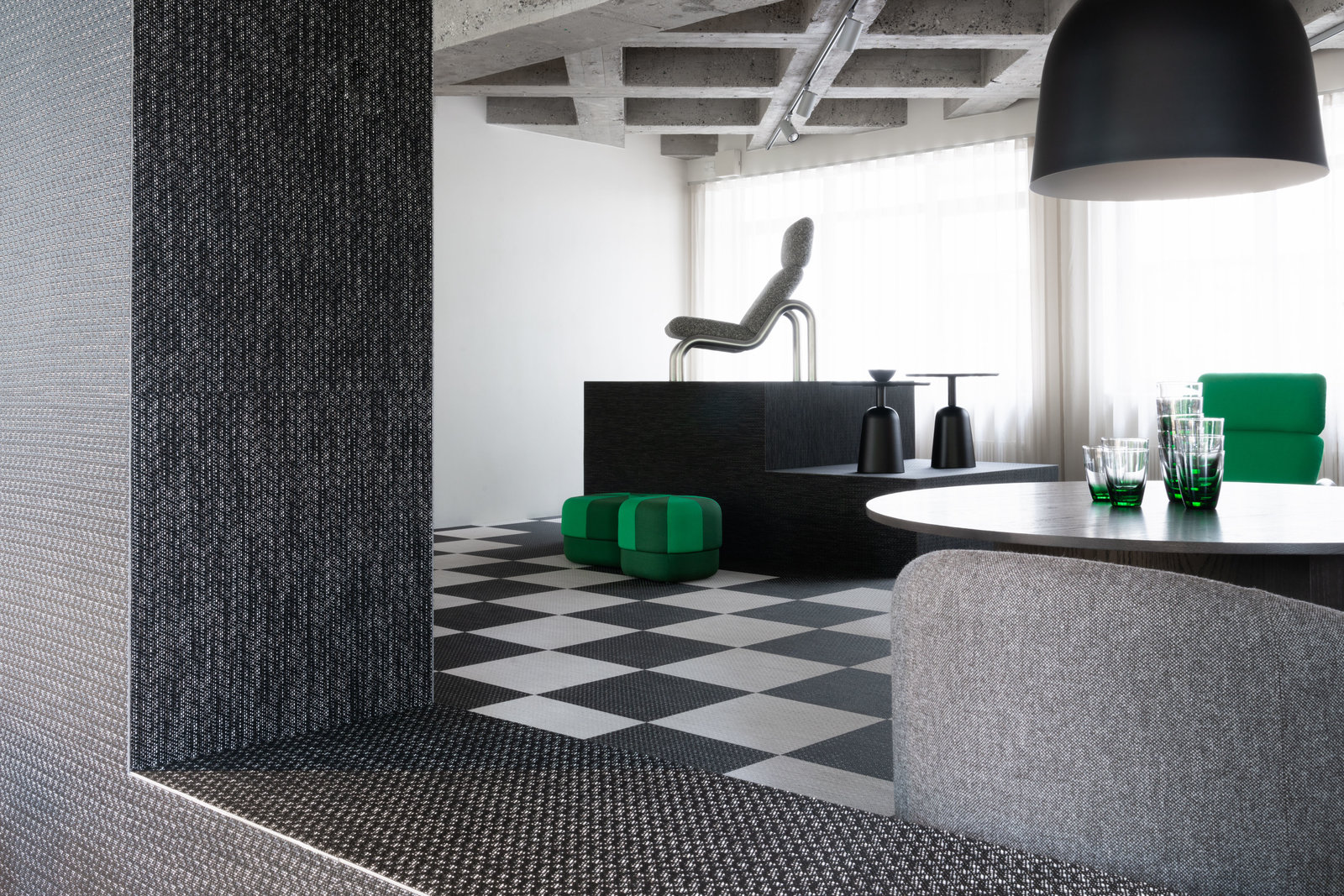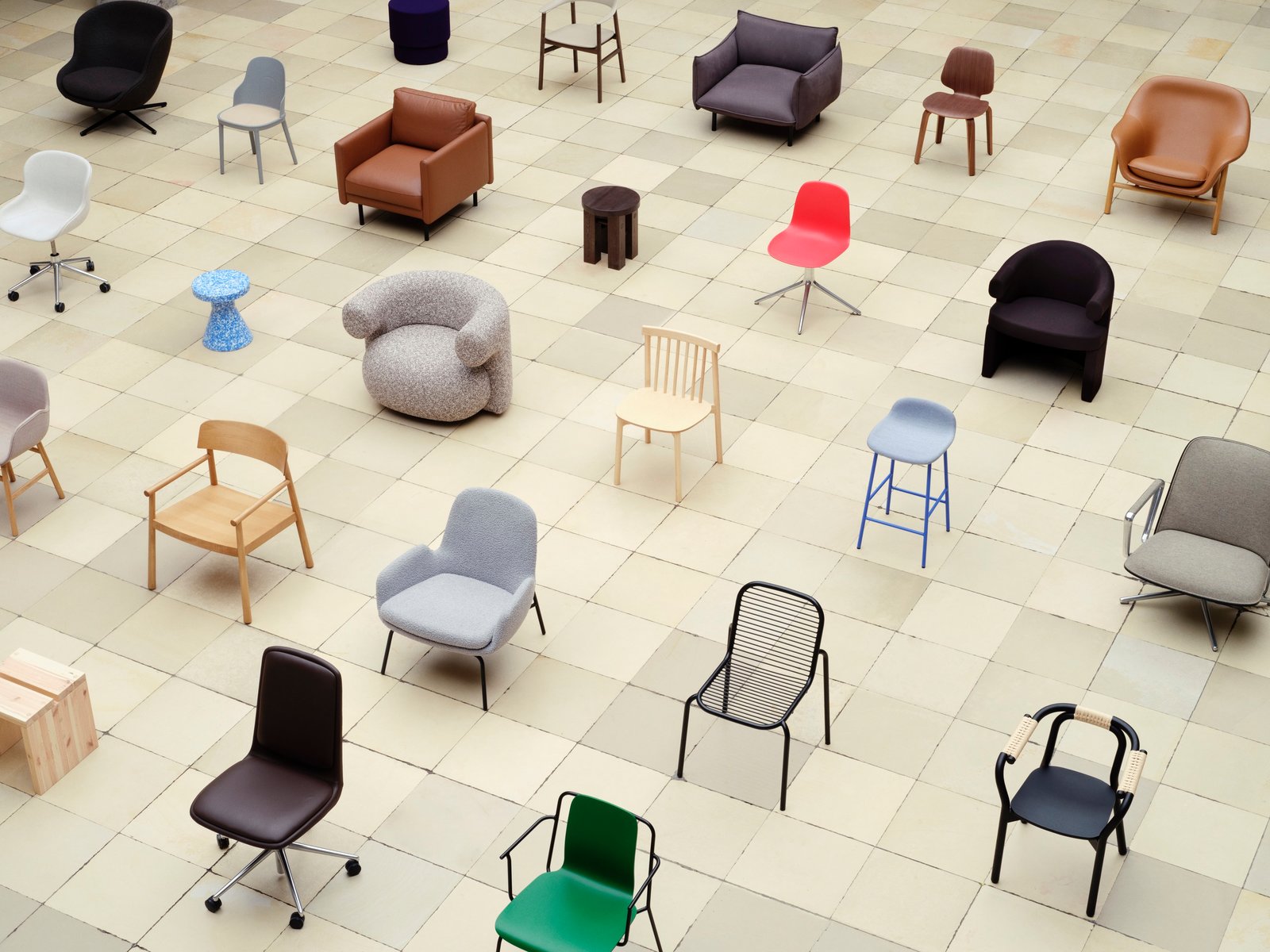How do you believe good design impacts the daily lives of people?
- Good design is not only beautiful to look at, it’s comfortable and convenient, too. It makes you happy when you look at it, but also while using it, which we strongly believe enriches people’s daily lives. We aspire to contribute to creating beautiful spaces that connect people all around the world.
Bolon provided flooring for your anniversary exhibition, could you walk us through the overall idea of this exhibition and the choice of flooring?
- Well, the creative decisions are entrusted to our talented brand team, particularly our Spatial Designer, who has designed the exhibition for 3daysofdesign. I know that we used BOLON flooring for our Stockholm showroom, which we were very happy with and which inspired us to explore further opportunities for collaboration. For this year’s 3daysofdesign, we paid homage to the 25-year legacy of Normann Copenhagen through an exhibition called ELEMENTS OF NORMANN, which dived into the core elements that have shaped our brand for the past quarter century, as well as where we see the brand moving towards in the future. BOLON’s dedication to sustainability matches our commitment to teaming up with more responsible-minded partners. In terms of the visual identity of the exhibition and the choice of BOLON flooring, we wanted this specific area of the exhibition to have more eye-catching flooring than the rest of the building, which is plain concrete. BOLON’s wide range of possibilities enabled us to choose different, interesting flooring solutions with an intriguing expression to elevate the exhibition. On top of that, BOLON’s end-of-life solution enables us to return the tiles afterward for them to be re-used or recycled, which aligns very well with our own mission of looking into better end-of-life management.

